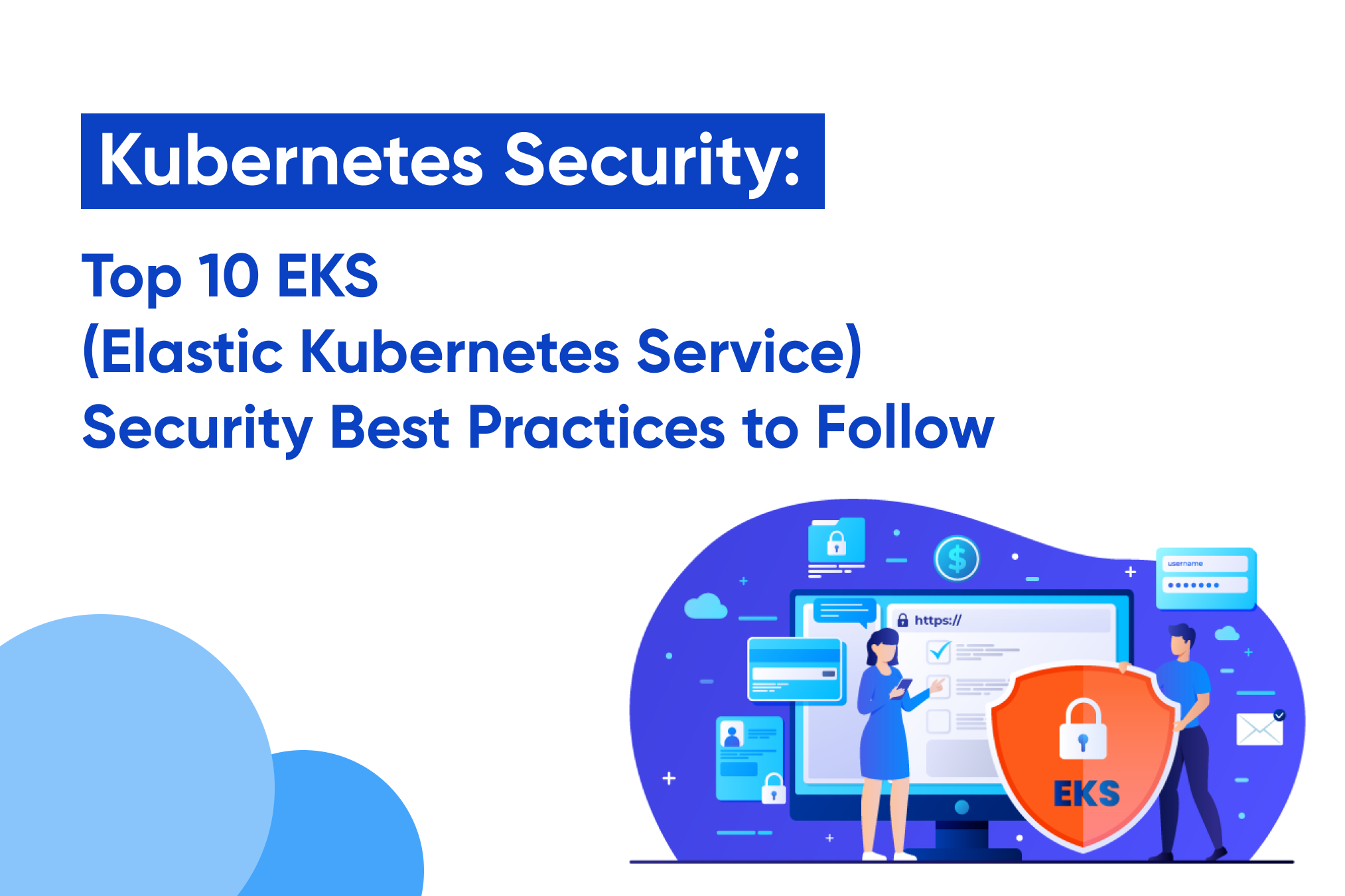

Considering Kubernetes, especially on EKS, is highly important. Amazon elastic Kubernetes security is a considerable element in the imperative process of managing, and scaling Kubernetes clusters in the AWS cloud.
However, security remains an important concern for organizations implementing Kubernetes, regardless of platform. In the highly competitive market, ensuring Kubernetes security is crucial to lay balanced data of workloads, and infrastructure.
Seamless, convenient integration of Amazon EKS can offer a holistic approach to building containerized applications. With the reliability of scalability and undoubted resilience. This article relates to the top 10 security practices when running on Kubernetes considering its security.
Elastic Kubernetes services are highly managed Kubernetes services offered by AWS, which are designed to simplify activities including deploying, managing, and scaling applications using Kubernetes on AWS.
Through EWS users can easily leverage the power of Kubernets without handling the pressure of managing the underlying infrastructure.
Amazon EKS serves with solid availability and scalability, along with distribution of Kubernetes planning across multiple Availability Zones to assure fault tolerance and their Kubernetes supports smooth integration with AWS Auto Scaling helping users scale their Kubernetes according to workloads.
EKS can benefit users with consistent updates applied to the Kubernetes control plane, assuring a secure and up-to-date atmosphere for running containerized workloads. In addition to this EKS is highly capable of supporting both managed and self-managed node groups, offering flexibility in balancing their competing resources. Ensuring strong security practices within Amazon EKS is paramount for several reasons, firstly its nature makes it an attractive target for malicious actors. The attack surface can be gradually expanded, making security measures more detailed in eradicating risks. The EKS environment often guides sensitive workloads and data, all over from customers.
Information about different algorithms. They also focus on other activities like data leaks, which can have severe consequences including finance or budget loss, or the reputation of an organization. With organized access, network monitoring, and mechanisms, attackers will not exploit vulnerabilities in interconnected systems to gain unauthorized access or data. The EKS mechanisms and security measures are highly helpful in detecting and responding to threats.
The foremost task is establishing a robust foundational base for the EKS cluster. It includes everything from smooth network policies to authentic mechanisms used during processes allowing safe encryption for data in movement and at rest. Utilizing AWS Identity and Access Management ( IAM) to offer permissions to Kubernetes service accounts is crucial in limiting access based on issues and principles.
Enforcing Amazon's virtual private cloud ( VPC) plays an important role in isolating EKS clusters within the private network. Implementing network segmentation using subjects, security groups, and VPC flow logs to analyze and control traffic between pods and external resources. It is significant to know that AWS private link for private connectivity to AWS services is much needed without public exposure.
It is crucial for security purposes that one should be aware of powering EKS nodes. Implementing strong access controls, regularly applying security patches, and utilizing AWS systems manager for automation patch management. Employing such tools as AWS configuration and AWS security hub is highly crucial for monitoring violations and security threats.
Implementing practices for building and analyzing image security is crucial when seeking an AWS elastic container Registry so that storing docker images can be convenient. Scanning images for vulnerabilities is important using tools like Amazon ECR image scanning and third-party solutions. Enforcing image signing and validation is also crucial to safeguard the flow of any malicious images.
Enforcing techniques related to RBA is important to have access to the EKS cluster. Defining roles and bindings enforcing granular permissions is crucial which is based on user roles and responsibilities. Consistency is very important, especially in assuring alignment with the principle that is crucial to upholding the privilege of security policies.
Utilizing pod security policies ( PSP) enforcing security practices at the pod level. Defining policies restricting privilege escalation, and enforcing container restrictions preventing the use of host networking and filesystem access. Testing PSPs thoroughly with assurity that it should not go beyond disruption or functional application.
Implementing monitoring and logging solutions to gain visibility for the EKS environment is crucial. Employing Amazon CloudWatch, AWS CloudTrail, and Amazon GuardDuty to scrutinize cluster activity, detect security incidents, and respond to threats in real time. Implement centralized logging using tools like Amazon Elasticsearch Service or AWS-native solutions for log aggregation and analysis.
The security of applications running on EKS is configured securely. Optimizing encryption for sensitive data at rest and in transit using AWS Key Management Service (KMS) or third-party solutions. Impacting AWS Secrets Manager or AWS Parameter Store for securely accumulating and managing application secrets, such as API keys and other database credentials.
Regular security updates prevent violations and external threats to the system which is crucial for the assessment of the EKS atmosphere. Utilizing AWS rules and security intersection plays an important role in evaluating the configuration of resources against security practices. Addressing unidentified issues with a clear conscience is important to maintain regular posture.
Development and test indication are important for recoveries and planning that are specific to the EKS atmosphere. Recovery of security incidents and service disruption. Leveraging AWS services like AWS backup and AWS disaster recovery to implement efficient backup and recovery techniques for EKS clusters and data.
Safeguarding Kubernetes workloads on Amazon EKS requires a proactive and multi-layered approach, though implementing these principles related to security should not be neglected. Protecting data and applications by maintaining secure Kubernetes compliance, staying vigilant and properly accessing security posture is imperative, prioritizing security measures which include network segmentation, access control, and monitoring can protect their Kubernetes workload. Safeguarding data, eradicating the risks associated with operating in a dynamic containerized environment.